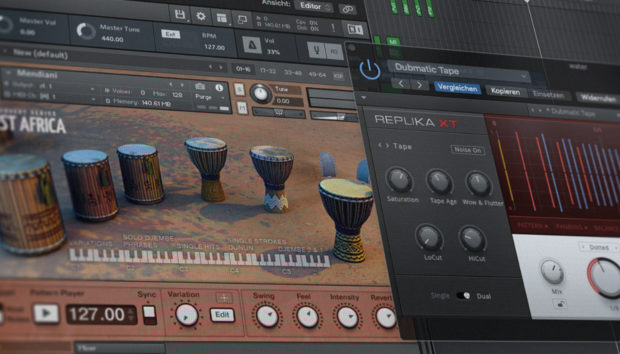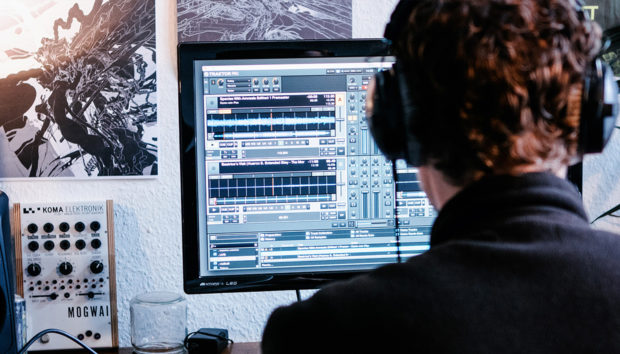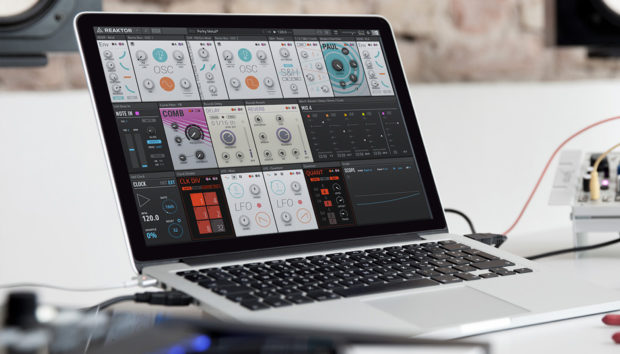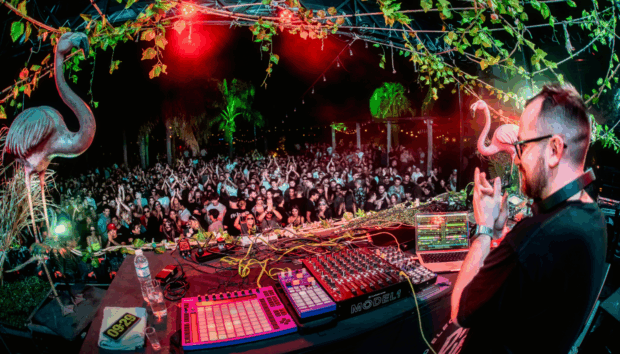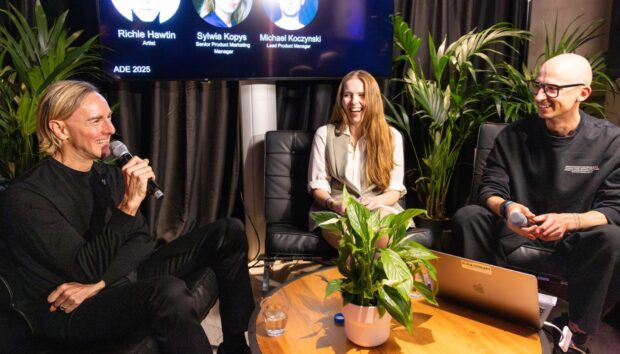Apple TV+’s Chief of War brings Hawai’ian history to the global stage, co-created by Jason Momoa and scored by Hans Zimmer with James Everingham. The soundtrack blends orchestral power with indigenous Hawai’ian traditions, capturing both the intensity and humanity of the story.
For Everingham, the project involved more than composing. Alongside commercial libraries, he created custom Kontakt instruments to handle recordings of Hawai’ian percussion, vocals, and woodwinds, ensuring these elements were integrated with authenticity and precision.
We spoke with James about the role of Kontakt in his scoring workflow, how custom libraries shaped Chief of War, and the lessons learned from balancing traditional performances with modern production.
Jump to these sections:
- Getting into building libraries
- Custom libraries and Chief of War
- Bridging textures with Kontakt
- Sampling and preserving authenticity
- How libraries shape perception of instruments
- Importance of custom toolkits
Host meticulously sampled instruments and build your own custom libraries with Kontakt:
You’re not only a composer but also a Kontakt library creator. How did you first get into building your own tools?

I got into writing music for film and TV because I loved technology as much as I did film and music. Technology is a huge aspect of a modern scoring workflow. And then, like many composers, I always want to push myself to write music that feels fresh and adventurous. As a composer for film and TV, you’re tasked with using music for world-building. The music does that as much as the production design, wardrobe, and script.
So in that sense, you want the music to be unique and singular to the film or show that it’s tied to. If I’ve done my job right, when people listen to the Chief of War soundtrack, they see Kaʻiana and Kamehameha in Hawaiʻi in the 1700s. The music is inherently connected to that storyline.
Creating and using my own sounds has always been a big part of that, and it feels like a natural intersection of all the elements of this job that drew me to it in the first place.
Pro tip from James Everingham: When designing a new sound, try using Form or VocalSynth to adjust the formant before you reach for an equalizer. Often adjusting the formant, even very slightly, can completely change how it sits in the mix.
How do the libraries you’ve built feed back into your scoring work for Chief of War?
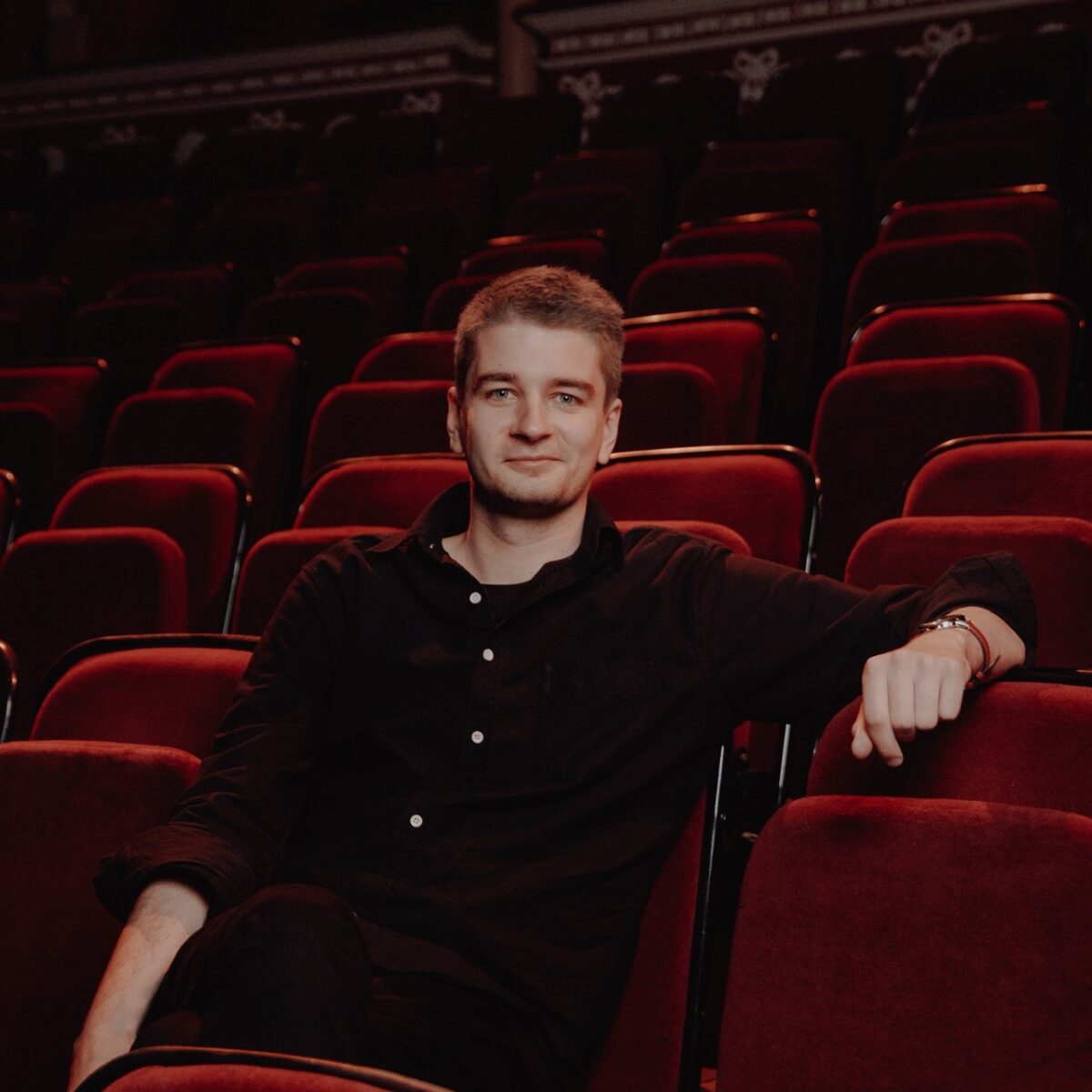
I often suggest this to new composers who are overwhelmed by all the sample libraries out there: focus on learning just a few libraries inside and out.
It’s great to have loads of options at your fingertips, but what really matters is knowing how to use those options to their full potential. Also, what their limitations might be. And then, of course, building your own libraries is even better. You’ve been there for every step of its creation, and now you have a toolkit you know better than anyone else.
Scoring Chief of War was a very fast-paced and intense process, so knowing exactly what to reach for at any given moment was a huge advantage in getting everything written, produced, and delivered on time.
Pro tip from James Everingham: Embrace the humanity of your musicians and their performances. The imperfections and deviations from your demo will often yield unique results.
When working across orchestral, electronic, and traditional recordings, how does Kontakt help you keep everything organized and consistent?

Kontakt is the backbone of my workflow, and it always has been. I remember saving up to buy it as a teenager. I had printed out a photo of Komplete and taped it to a piggy bank until I had enough spare change and pocket money.
So the vast majority of the sample libraries I use are running smoothly and reliably in Kontakt – and that’s everything from orchestral samples, to certain sound design and synth elements, and also some Hawai’ian recordings. By this point, I’m really familiar with the backend controls, and to have so many libraries accessible in the same browser is a major convenience.
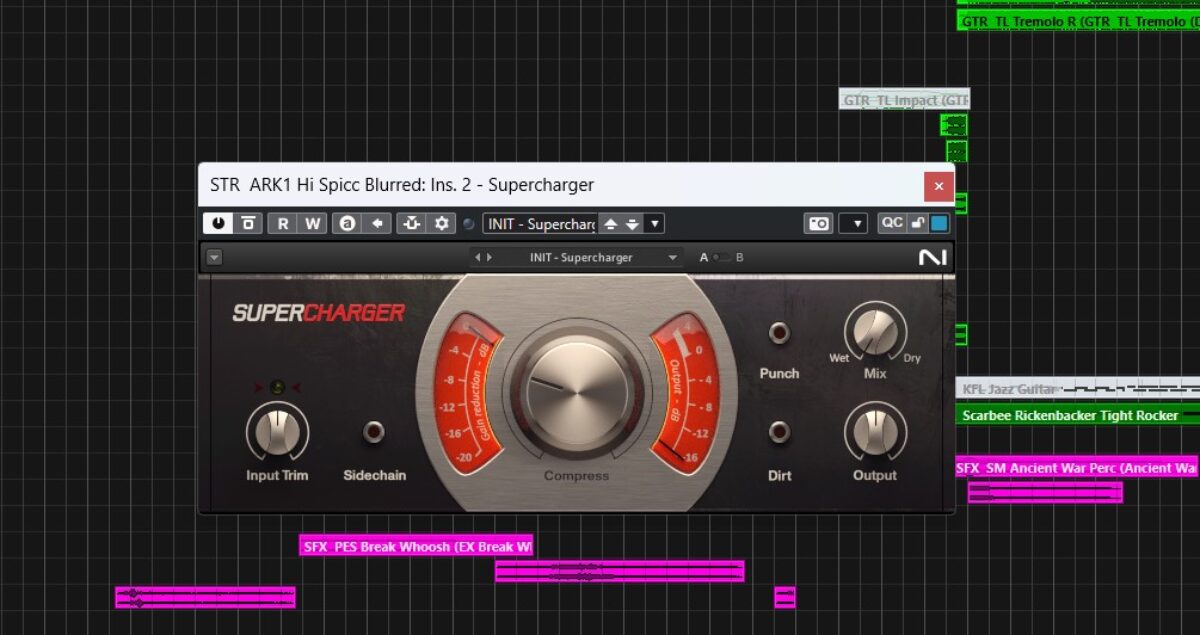
I also like to keep a lean Cubase template that allows us to move between cues quickly, and the Komplete effects are great for that too. Supercharger and Replika are two go-to plugins that appear in every single session. They have a really low overhead and allow me to make these broad brush strokes really quickly.
Pro tip from James Everingham: Don’t get bogged down by all the products out there and all the advice people give you on the internet. I believe the best way to learn, especially in composition and production, is through doing. Learn and trust what sounds good to you, even if you’re using free, basic, stock plugins. If it works, it works
With Hawai’ian cultural elements in Chief of War, how did you approach sampling and processing those performances in a way that still preserved their authenticity?
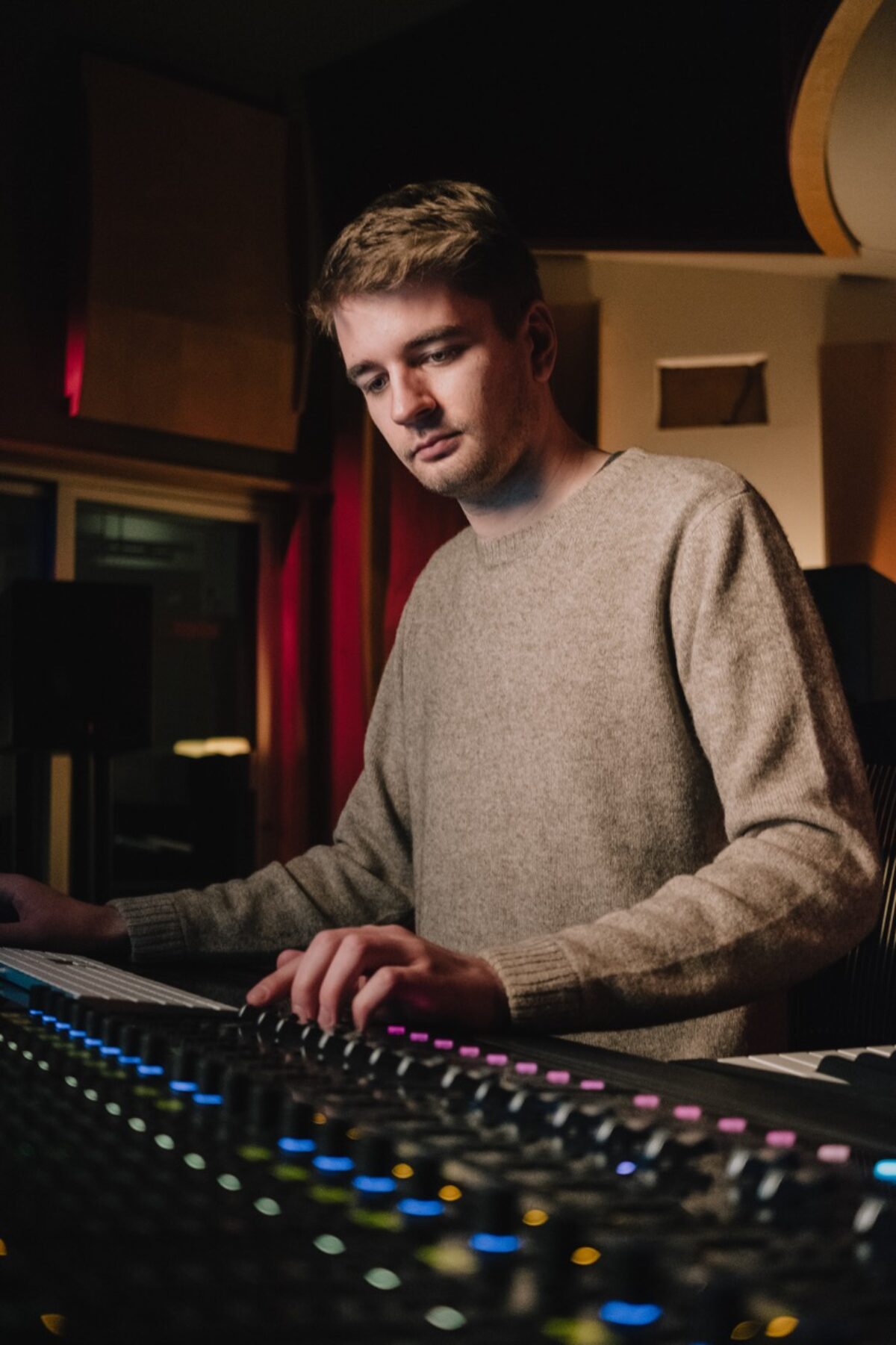
We recorded all sorts of instruments and performances both in Hawaiʻi and in Los Angeles, but the heart of the score came from the vocal groups we recorded on O’ahu.
We were really careful about how we used those recordings, because Kaumakaiwa Kanaka’ole had written lyrics in the Hawai’ian language. You can’t just place them anywhere because they have real meaning and weight for the specific scenes they’re attached to.
However, we did also record some more atmospheric vocal performances like breaths, screams, soft humming, and guttural utterances. The vocalists were down to get experimental with it, which was great. We went a little overkill with the mic setup, but that gave us flexibility later on to process those recordings.

We stretched them, tuned them, chopped them up, and used them all over the score. We also had a lot of close-mic’d percussion recordings. We had expert local performers, but sometimes the recording environments weren’t ideal, so Transient Master was a really easy way to help reshape and smooth those recordings so that they’d blend seamlessly with the orchestra and modern textures.
Pro tip from James Everingham: It’s easier to add reverb later than to take it away. Use it sparingly. Bone-dry sounds can be just as powerful as glorious ambience.
Have you noticed your libraries changing the way you perceive instruments in the real world?
Absolutely. Sample libraries are what allow me to actually realize my own music – I’m not a classically trained musician and I can’t read or write sheet music, so I’d be out of luck without the technology.
On one hand, the total flexibility of an orchestra at your fingertips is an incredible resource and playground. On the other hand, I have caught myself writing in a way that lends itself to sample libraries more than to real-life musicians. I’m still learning what techniques are best kept in the computer, which techniques are best recorded live, and where there’s crossover.
When you look back at the process of scoring Chief of War, how important was having your own custom toolkit compared to relying solely on commercial libraries?
It was essential for what we were trying to do with the show. This is really the first time Hawaiʻi has been represented on a global platform like Apple TV+. For many people, it’s their first time hearing ʻōlelo Hawaiʻi (the Hawai’ian language), let alone on screen or in the score.
Obviously, the vocals were a huge part of that, but we also had Hawai’ian woodwinds and a huge variety of percussion recordings to work with. Many of those instruments have never been sampled before, so developing our own toolkit was the only way that we were going to be able to work them into the score with any measure of flexibility.
Pro tip James Everingham: Look beyond the technical applications of dynamics processors. Simple, minimalist vintage compressors like the VC 2A offer a completely different musical perspective than something more modern and surgical like Solid Dynamics or Solid Bus Comp. Choose your compressors like you choose your instruments.
Wrapping It All Up
James Everingham’s work on Chief of War shows how custom tools and commercial libraries can complement each other. Kontakt handled orchestral and sound design elements while also hosting custom Hawai’ian instruments and vocals.
The workflow emphasized both efficiency and respect for cultural authenticity. By building libraries from scratch and pairing them with Komplete effects like Supercharger and Replika, Everingham was able to deliver a score that matched the series’ ambition while preserving the integrity of Hawai’ian performance traditions.
Chief of War demonstrates how composers can use Kontakt and their own sound design to create music that feels specific, powerful, and connected to the story it supports.
